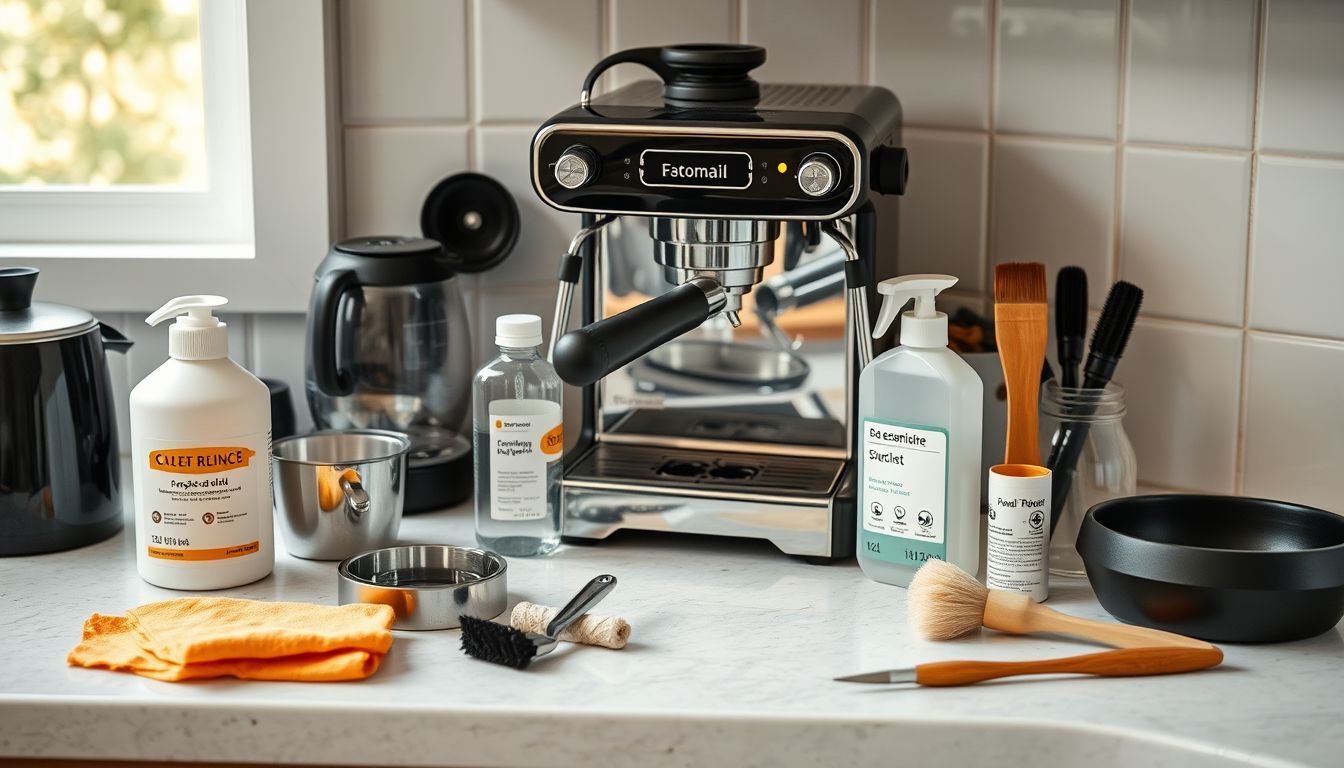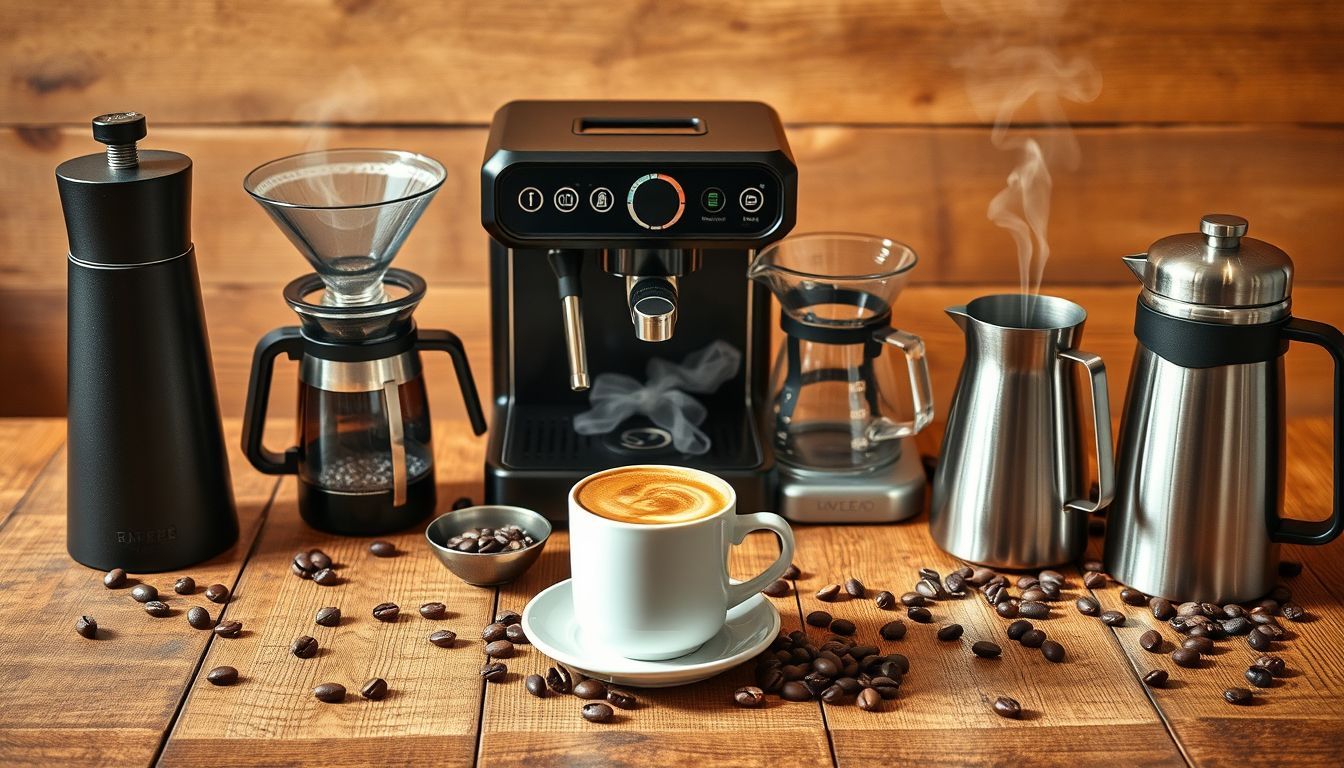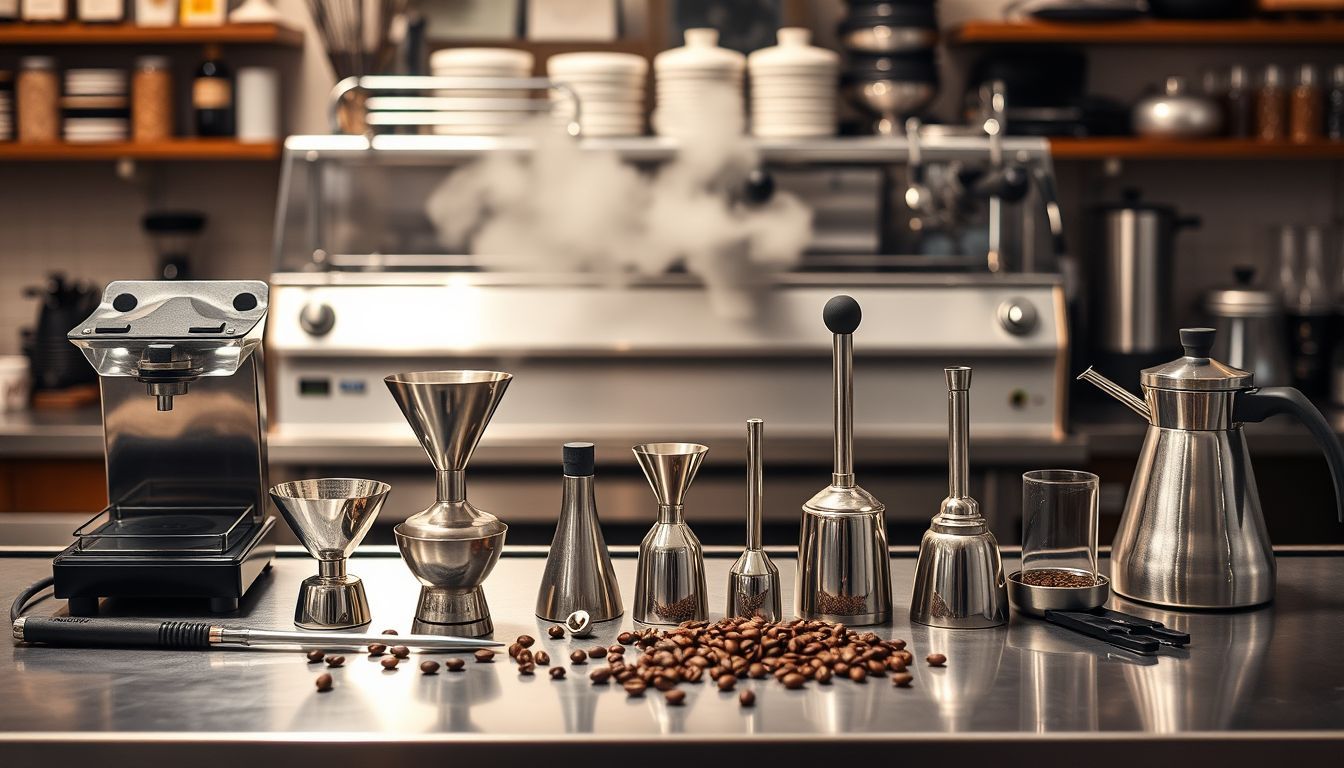The Ultimate Guide to Coffee Maker Maintenance: Keep Your Equipment Brewing Like New
Proper maintenance extends coffee maker life by years and improves flavor. Learn expert cleaning schedules, descaling techniques, and troubleshooting tips for every type of equipment.

Amazon Affiliate Disclosure
This post contains affiliate links. If you purchase through these links, we may earn a small commission at no additional cost to you.
The Ultimate Guide to Coffee Maker Maintenance: Keep Your Equipment Brewing Like New
Last month, I received a panicked email from a friend: "My $400 espresso machine tastes like it's brewing liquid sadness. Help!" After some detective work, we discovered the culprit wasn't a mechanical failure or cosmic coffee curse—it was six months of mineral buildup that could have been prevented with 15 minutes of monthly maintenance.
This scenario plays out in kitchens worldwide every day. Coffee makers that could brew excellent coffee for decades instead limp along producing increasingly bitter, weak, or off-flavored results because their owners treat maintenance like an optional suggestion rather than essential care.
As someone who has dissected, repaired, and resurrected more coffee equipment than I care to count, I've learned that proper maintenance isn't just about extending equipment life—it's about preserving the quality that made you buy the machine in the first place. A well-maintained $200 coffee maker will consistently outperform a neglected $2,000 machine.
Today, we're building the definitive maintenance guide for every type of coffee equipment, from simple drip makers to complex espresso machines. These aren't manufacturer suggestions designed to sell cleaning products—they're field-tested protocols that actually work.
Why Coffee Equipment Maintenance Actually Matters
Before diving into specific procedures, let's understand what happens when coffee equipment isn't properly maintained.
The Hidden Enemies of Coffee Quality
Mineral Buildup (Scale)
Water contains dissolved minerals that precipitate out when heated, forming scale deposits inside your equipment. This buildup:
- Restricts water flow, affecting brewing pressure and timing
- Insulates heating elements, reducing efficiency and temperature control
- Creates rough surfaces where bacteria and mold can grow
- Eventually causes mechanical failure of pumps and valves
Coffee Oil Rancidity
Coffee oils contain compounds that turn rancid when exposed to air and heat. Accumulated rancid oils:
- Add bitter, unpleasant flavors to fresh coffee
- Create a film that affects extraction consistency
- Provide nutrients for bacterial growth
- Become increasingly difficult to remove over time
Bacterial and Mold Growth
Warm, moist environments with organic residues create perfect conditions for microbial growth. This contamination:
- Poses health risks, especially for immunocompromised individuals
- Creates off-flavors and odors
- Can cause equipment corrosion
- May trigger allergic reactions
The Performance Impact
Neglected equipment doesn't just taste bad—it performs poorly:
- Inconsistent water temperature affects extraction
- Clogged passages create uneven flow patterns
- Reduced heating efficiency increases energy consumption
- Premature component failure leads to expensive repairs
Universal Maintenance Principles
Regardless of equipment type, certain principles apply to all coffee maker maintenance.
The Three Pillars of Coffee Equipment Care
Daily Cleaning: Remove coffee residues and prevent buildup
Weekly Deep Cleaning: Address accumulated oils and residues
Monthly Descaling: Remove mineral deposits and restore performance
Water Quality: The Foundation
Your water quality directly affects maintenance requirements:
- Hard water (high mineral content) requires more frequent descaling
- Soft water may cause corrosion in some equipment
- Filtered water reduces maintenance needs and improves taste
- Distilled water can damage equipment designed for mineral content
Optimal water characteristics:
- Total dissolved solids: 75–150 ppm
- Calcium hardness: 1–5 grains per gallon
- pH: 6.5–7.5
- Chlorine: <1 ppm
Drip Coffee Maker Maintenance
For many home brewers, the workhorse of choice is a programmable drip machine. A popular option is the Hamilton Beach 2-Way 12 Cup Programmable Drip Coffee Maker & Single Serve Machine, which combines carafe brewing with single-serve flexibility.
Daily Maintenance (2 minutes)
After each use:
- Remove and rinse the carafe and filter basket
- Wipe down the hot plate and exterior
- Leave the lid open to air dry
- Empty remaining water from the reservoir
Pro tip: Never let coffee sit on the hot plate for hours—it creates burnt residues that are difficult to remove.
Weekly Deep Clean (15 minutes)
What you’ll need:
- Mild dish soap
- Soft cloth or sponge
- Toothbrush for detailed cleaning
- White vinegar
Procedure:
- Wash all removable parts with warm, soapy water
- Clean the water reservoir with a damp cloth
- Wipe down all surfaces, paying attention to coffee splatter areas
- Clean the hot plate with a damp cloth (never use abrasives)
- Use a toothbrush to clean around buttons and crevices
Monthly Descaling (30 minutes)
Descaling solution options:
- Commercial descaler (follow manufacturer instructions)
- White vinegar (1:1 ratio with water)
- Citric acid (2 tablespoons per quart of water)
Process:
- Fill reservoir with descaling solution
- Run a complete brew cycle (no coffee)
- Let solution sit in carafe for 15 minutes
- Run 2–3 cycles with fresh water to rinse
- Taste test—if vinegar flavor remains, run additional rinse cycles
Espresso Machine Maintenance
Espresso machines require more intensive maintenance due to their complexity and the precision required for proper extraction. Even high-end home machines benefit from regular care.
After each use:
- Purge the group head and steam wand
- Wipe down exterior surfaces
- Remove and rinse portafilter and basket
Weekly deep clean:
- Backflush with espresso machine cleaner
- Deep-clean the steam wand
Monthly descaling:
- Follow manufacturer instructions for descaling solution
- Rinse thoroughly (3–5 full reservoir flushes)
Pour-Over Equipment Maintenance
Pour-over brewers like the Hario V60 Ceramic Coffee Dripper are simple to maintain, but regular cleaning ensures flavor clarity.
Daily Maintenance (2 minutes)
- Rinse the dripper with hot water
- Remove coffee particles from ridges or holes
- Air dry completely
Weekly Deep Clean (5 minutes)
- Wash with warm, soapy water
- Use a soft brush for detailed cleaning
- Rinse thoroughly and air dry
Pro tip: For plastic drippers, occasionally soak in a baking soda solution to remove absorbed oils.
Grinder Maintenance
Consistent particle size is non-negotiable. Regular cleaning of your grinder—whether a home burr grinder like the OXO Brew Conical Burr Coffee Grinder or a blade grinder—ensures reliable performance.
Daily Maintenance (1 minute)
- Empty hopper and grounds container
- Brush out visible grounds from burr chamber
Weekly Deep Clean (15 minutes)
- Remove and brush upper burr (consult manual)
- Wipe burrs with a dry cloth
- Clean hopper and grounds container with soapy water
Monthly Deep Clean (30 minutes)
- Use grinder cleaning tablets or run uncooked rice through your grinder
- Purge with coffee beans afterward
French Press, Aeropress & Others
These manual brewers are easy to clean: disassemble, rinse all parts, use a soft brush on mesh screens, and air dry. For stubborn residues on a French press, soak in baking soda solution or use rice as a gentle abrasive.
Troubleshooting Common Issues
- Slow brewing/weak coffee? Descale immediately and check grind size.
- Bitter or off-flavors? Deep clean to remove rancid oils.
- Inconsistent results? Complete a full maintenance cycle and inspect components.
Maintenance Schedules by Usage Level
Light Use (1–2 cups daily)
- Daily: Basic cleaning
- Weekly: Deep clean every 2 weeks
- Monthly: Descale every 6–8 weeks
Moderate Use (3–6 cups daily)
- Daily: Thorough cleaning
- Weekly: Deep clean weekly
- Monthly: Descale every 4–6 weeks
Heavy Use (7+ cups daily)
- Daily: Comprehensive cleaning
- Weekly: Deep clean twice weekly
- Monthly: Descale every 2–3 weeks
Investing in Maintenance
Proper maintenance isn’t a chore—it’s an investment. The 15–30 minutes you spend each week cleaning and maintaining your equipment pays dividends in better-tasting coffee, longer equipment life, and fewer breakdowns.
For those building or upgrading a home setup, consider these field-tested picks:
- A versatile brewer like the Ninja 12-Cup Programmable Coffee Brewer
- Essential tools such as the OXO Brew Conical Burr Coffee Grinder
- A precision dripper like the Hario V60 Ceramic Coffee Dripper
Start with daily cleaning and monthly descaling, then build more comprehensive habits as they become routine. Your future self (and your taste buds) will thank you for the effort.
What’s your experience with coffee equipment maintenance? I’m always interested in real-world tips and stories from fellow coffee enthusiasts!

Sofia Rossi
I started my career in a world of spreadsheets and boardrooms, but I quickly realized the most interesting data was in the way people interacted when the pressure was on. My novels are my way of analyzing the human heart—the messy, complicated, and often hilarious parts. I write about the lives we lead now, with all the love, ambition, and absurdity that comes with it.


